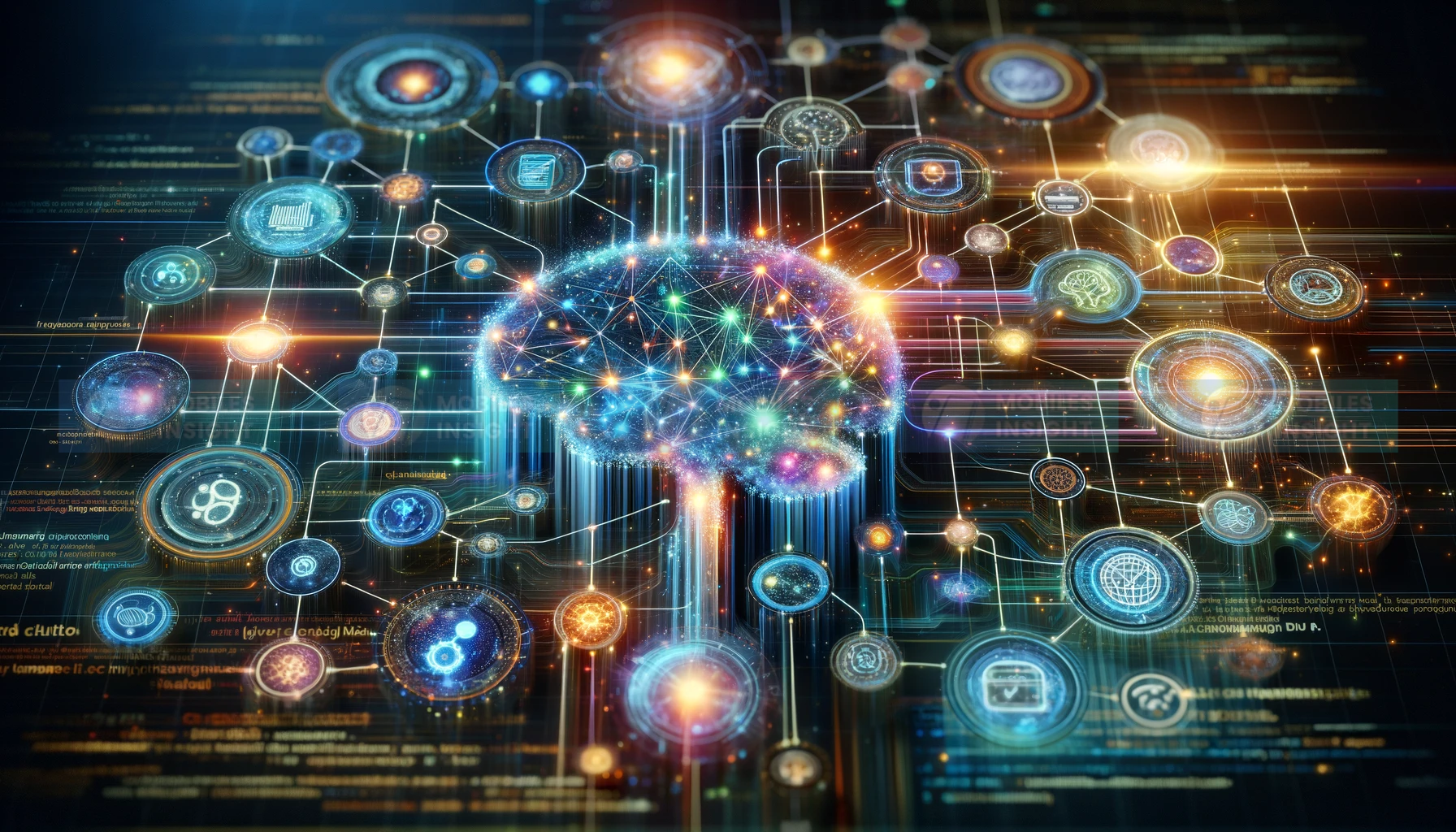
The Future of Natural Language Processing in AI and Technology
Natural Language Processing (NLP) is changing the way humans and machines communicate. From AI chatbots to real-time language translation, NLP helps technology understand human language better. New developments in deep learning, smart language models, and support for multiple languages are making AI more intelligent and easy to use. Businesses, healthcare, education, and creative fields can benefit from these changes, making interactions faster, personal, and smoother. As NLP grows, it will change the way we use digital systems, turning AI into a helpful conversational partner rather than just a tool.
The Evolution of NLP: From Rule-Based Systems to Deep Learning
Natural Language Processing (NLP) has changed a lot over the past few decades. In the beginning, NLP systems were fully rule-based. They relied on manually created grammar rules, dictionaries, and word lists to understand text. These systems could do simple tasks like identifying parts of speech or matching keywords, but they were very limited. They had trouble understanding ambiguous language, idioms, slang, and context, making it very hard to scale.
The Rise of Statistical NLP
In the 1990s and early 2000s, statistical NLP brought the first big improvement. Instead of writing rules by hand, these models learn from large collections of text. Techniques like Hidden Markov Models (HMMs) and n-grams helped computers predict and analyze language more flexibly. However, these methods still could not fully understand the meaning behind words in different contexts.
Deep Learning and Transformer Models
The real breakthrough came with deep learning and transformer-based models. Models like Google’s BERT, OpenAI’s GPT series, and T5 (Text-to-Text Transfer Transformer) use neural networks trained on billions of words. This allows them to understand language in context. Unlike earlier models, transformers can look at whole sentences or paragraphs at once and understand relationships between words. For example, BERT looks at both the words before and after a word to fully grasp its meaning. These models achieve top results in tasks like answering questions, analyzing sentiment, and recognizing names and places.
Transfer Learning and Real-World Uses
These models also work well with transfer learning. A pre-trained model can be fine-tuned for a specific task or domain using a smaller dataset. This saves time and resources while maintaining high accuracy. Today, deep learning NLP powers tools like human-like text generation, chatbots, real-time translation, summarization, and AI-driven content creation.
Achievements and Research Insights
Research from Stanford NLP Group and Hugging Face shows that models like GPT-4 perform nearly as well as humans on several language tests, including GLUE and SuperGLUE. They scored over 90% in tasks like understanding and reasoning. This is a huge improvement compared to old rule-based systems that could barely handle simple sentences.
From Rules to Context-Aware Intelligence
Overall, NLP has moved from rigid, rule-based systems to smart, context-aware models. Today’s NLP can understand and generate complex human language with amazing accuracy.
Key Trends in Natural Language Processing
Large Language Models (LLMs) Becoming Standard
Models like GPT-4 and Anthropic's Claude are changing the game in NLP. They can understand context and give clear, accurate responses in many areas. From chatbots in customer service to content creation and even coding, these models are showing how useful and versatile they are.
Real-Time Multilingual Translation
NLP is making real-time translation much better. These tools now work almost like a human translator, helping people communicate easily across different languages. This is very helpful for global businesses, international relations, and multicultural communities.
Multimodal NLP: Combining Text, Voice, and Vision
NLP is now working with other technologies like speech and vision. This means AI can understand not only words but also tone of voice, facial expressions, and pictures. This makes virtual assistants and learning apps much more interactive and user-friendly.
Low-Code NLP Tools for Everyone
Low-code platforms are making NLP easier for people without programming skills. Businesses can now create custom tools for tasks like analyzing customer feedback, sorting documents, or understanding sentiment. This helps them innovate faster and save time.
Ethical Considerations and Challenges
As NLP technologies become more common in our daily lives, like in virtual assistants, automated customer support, and AI content creation, ethical concerns are becoming very important. One major issue is bias in language models. These systems are trained on large amounts of internet data, so they can pick up societal biases, such as gender, racial, or cultural stereotypes. Studies show that some models give biased results in sensitive situations up to 30% of the time, which shows the need for careful monitoring.
Data privacy is another big concern. NLP tools use a lot of personal data, like conversations, emails, and search history, so it is very important to store this data safely and keep it anonymous. Without strong protections, private information can be misused or leaked.
Misuse of NLP is also a growing problem. AI-generated text can be used to spread fake news, phishing scams, or manipulate public opinion, as has happened in automated fake news campaigns around the world.
To reduce these risks, developers are using Explainable AI (XAI) to make how models make decisions more transparent. They also apply techniques to reduce bias, follow ethical rules, and comply with regulations like GDPR. Using NLP responsibly ensures it is fair, transparent, and trustworthy, while helping society benefit from this technology.
The Global Impact of NLP Advancements
Advancements in Natural Language Processing (NLP) are changing the way people communicate worldwide, especially in regions with many languages like South Asia. AI-powered NLP tools are helping bridge language gaps and promote inclusivity by providing real-time translation, transcription, and other accessibility features. For example, software developed in India can create real-time Hindi subtitles and translate spoken content from different languages, helping both hearing-impaired people and those who do not speak the language fluently. These tools can also understand tone and context, making communication better in education, entertainment, and work.
In education, NLP-based platforms offer multilingual translations, text summarization, Q&A generation, and even support for Indian Sign Language. This helps students from different language backgrounds access learning materials more easily. Advances in sign language recognition are also providing communication solutions for millions of hearing-impaired people, encouraging social inclusion.
However, challenges remain, especially for low-resource languages in South Asia, where limited data can reduce AI accuracy. Researchers are working on developing models that are culturally and linguistically suitable to make NLP more inclusive. Overall, NLP is transforming how humans interact with technology and helping more people access information and communicate, making AI a strong tool for social and language empowerment.
Future Outlook: What Lies Ahead for NLP?
The future of Natural Language Processing (NLP) promises big changes in how humans and machines communicate. Advances in quantum computing may help NLP models handle huge amounts of data much faster, improving understanding, real-time translation, and sentiment analysis in many languages.
Ethical and explainable AI is becoming very important. As NLP is used more in healthcare, finance, and education, transparency, fairness, and reducing bias are essential. Future models will try to explain their reasoning, helping people understand AI decisions while respecting different cultures and languages.
Multimodal NLP, which combines text, speech, and visuals, will let AI understand context better. This will allow virtual assistants and AI tools interact with people in more natural and meaningful ways.
Supporting low-resource languages is another key focus, making technology accessible to everyone and reducing communication gaps. Personalized NLP systems will also adapt to each user’s preferences, learning styles, and cultural background for a more customized experience.
In the end, NLP is growing beyond just understanding language. The goal is to create AI that is intelligent, ethical, aware of context, and human-friendly, helping people communicate, learn, and create more effectively around the world.
Final Thoughts
In 2025, Natural Language Processing is leading the way in AI innovation, bringing changes that are transforming industries and improving how humans interact with computers. As we explore more of NLP’s potential, it is important to focus on ethics and inclusivity so that these technologies benefit everyone. NLP’s journey is just beginning, and its future holds great promise for creating a more connected and intelligent world.
Popular Phone Reviews

Samsung Galaxy A70 Review: Features, Performance, and Value Insights

Apple iPhone 16 Pro Max Review: Features, Performance, and Value Insights

Apple iPhone 12 Pro Max Review: Features, Performance, and Value Insights

Xiaomi Redmi 12 Review: Features, Performance, and Value Insights






